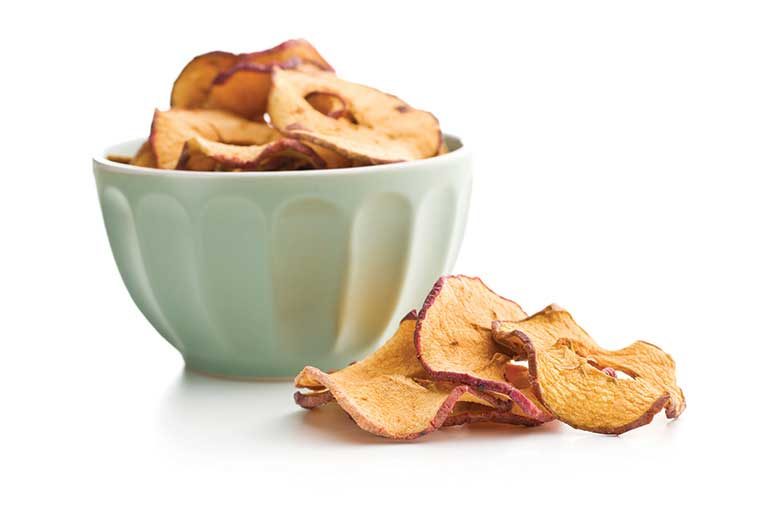
Look around the supermarket, and you’ll find a rainbow of shelf-stable dried fruits — in the baking aisle, international aisle or as freeze-dried fruits in the produce section.
Sweeten savory recipes. Using sweet dried fruits in savory dishes adds contrasts in flavor and an opportunity to reduce the amount of salt you consume. Spices such as cumin, coriander and cinnamon complement Moroccan meatballs with dried apricots or golden raisins. Make a one-pot dish of chicken, olives and prunes or dried figs. Stuff acorn squash halves with bulgur and dried cherries or cranberries.
Bake better. In a recipe for baked goods, replace half the fat with dried fruit puree to increase the nutrition while decreasing the fat and sugar content. For example, puree 8 ounces of dried plums with 6 tablespoons of hot water. If a recipe calls for 1 cup oil, use ½ cup oil and ½ cup prune puree. Also, decrease the sugar in that recipe by one-third to one-half because of the sweetness of the prunes. Avoid over-mixing the batter. Prune puree makes chocolate recipes taste especially rich and also is delicious in baked goods with fruit, such as muffins or other recipes where moist, soft or chewy results are desired.
Give as gifts. Dried fruits are nature’s presents and can be welcome additions to holiday treat platters, appetizer plates and gift baskets. Or make them the star by combining dried mango, pineapple, dates, large raisins and other dried fruits with fresh citrus fruit for a holiday gift.
Avoid sticky situations. When chopping dried fruit for recipes, coat your knife with nonstick cooking spray before slicing or occasionally run your knife under hot water to prevent the fruit from sticking. Before measuring chopped dried fruit, mist measuring cups with cooking spray for easy release.
Dry your own. Cranberries, sliced apples, halved grape tomatoes and other fruits can be dried in an oven or a food dehydrator. Dry fruits at 140 to 150 degrees Fahrenheit. The length of time varies based on the fruit size, humidity and whether air is circulated by using a convection oven or a food dehydrator; almost double the time and energy is needed in a conventional oven. Using a conventional oven with the door propped open, drying time is about five hours for thin apple slices, six hours for cranberries and 10 hours for grape tomato halves. Stir food and turn large pieces over every three to four hours.
Dried fruits should be leathery and pliable; for food safety, store dried fruit in the refrigerator if there is even a hint of moisture.
Freeze-dried. When processed and packaged correctly, freeze-dried fruits retain their original flavor and nutrients. Using a food processor, whiz these melt-in-your-mouth fruits into a powder. Roll fruit-and-nut energy balls in the powder or use it in place of sugar in homemade whipped cream.
Store well. Store opened dried fruit in an airtight container below 70 degrees Fahrenheit and consume within one month; it also can be stored in the refrigerator for six months or the freezer for a year. In large-scale foodservice kitchens, avoid storing dried fruit in warm places or near grain-based foods such as cereal or flour to avoid attracting insects. Similar to honey crystalizing, sugars in dried figs can rise to the surface and turn white; they provide a natural (and safe) crunch when eating a soft dried fig. To remove crystals, rinse figs with warm water or use in a cooked or baked recipe where crystals will dissolve when warmed.
References
Prune Puree Recipe. Sunsweet Growers website. Accessed October 24, 2019.
Shelf-Stable Food Safety. United States Department of Agriculture Food Safety and Inspection Service website. Updated August 2014. Accessed October 24, 2019.
USDA Foods Product Information Sheet for Child Nutrition Programs. United States Department of Agriculture website. Published June 2016. Accessed October 24, 2019.
What is the white crystalized substance on my figs? Valley Fig Growers website. Accessed October 24, 2019.

